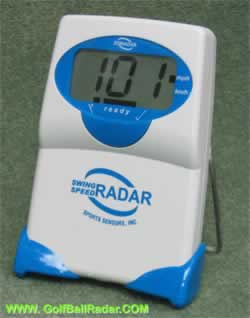
|
|
|
Golf Playing LessonsFrom this page, you can access playing lessons for various parts of the game. Click on the topics below and you'll be taken to the appropriate place in the website. Look below the navigation menu (the one below this sentence) for the specific page's content.
|
Putt
Length |
Pro |
Hcp 0-4 |
Hcp 11 |
Hcp
26 |
Me |
3
feet |
1.07 |
1.22 |
1.35 |
1.50 |
1.15 |
6
feet |
1.32 |
1.46 |
1.62 |
1.86 |
1.42 |
10
feet |
1.54 |
1.63 |
1.83 |
2.10 |
1.62 |
15
feet |
1.75 |
1.76 |
1.98 |
2.29 |
1.72 |
20
feet |
1.86 |
1.86 |
2.10 |
2.43 |
1.92 |
30
feet |
1.96 |
2.00 |
2.27 |
2.61 |
2.02 |
40
feet |
2.00 |
2.10 |
2.38 |
2.77 |
2.07 |
50
feet |
2.10 |
2.20 |
2.50 |
2.91 |
2.39 |
For myself, a 2 handicapper, my overall putting is better than the average 0 - 4 handicapper. My putting is one of the main reasons I remain a low handicapper. On 10, 6 foot putts, I'll take on average 14.2 strokes while a 26 handicapper will take 18.6 strokes; that's a 4.4 stroke difference. And remember, these are averages. One day I may take 18 strokes and on others I may take 10 strokes.
I encourage you to keep your putting statistics like I do above so that you can monitor your progress. It will give you an accurate measure of how you're doing. You can compare your stats to the table above. All you need to do on your scorecard for each round is record the length of each putt and how many strokes it took to hole out. Pace out your distances trying to take 3 foot paces. As you gain experience, you'll be able to estimate many putts without pacing.
I've written a little spreadsheet program to keep track of your putting statistics. Make a purchase of anything I sell from my site and I'll send it to you as a BONUS. Just send me an email after your purchase to let me know you'd like it. OR, you can purchase it for only $5.99.
For example, let's say you measure a putt to be 6 paces, or 18 feet. I would record this as a 20 foot putt (round to the nearest 5). You hit the ball 6 feet past the hole and sink the 6 footer. You would record a 20 footer with 2 strokes taken and a 6 footer with 1 stroke taken. If you were to have missed the 6 footer, it would be recorded as 2 strokes. If you stroked the 20 footer to within tap in range, you would only record a 20 footer with 2 strokes; there is no second putt.
After about 10 rounds, you'll have enough putts to calculate a realistic average. In my previous 10 rounds, I've had 39, 10 footers, and I've taken 66 strokes. The average is 63/39 = 1.62. If you choose to implement some of my putting tips, you'll be able to determin if in fact they are making a significant improvement in your putting.
If you have any questions or comments, feel free to email me at golfexpert@probablegolfinstruction.com
©Probable Golf Instruction, Ken Tannar 2001-2011. All Rights Reserved.
Langley, B.C. V2Y 2G4Phone: 604-539-7760 FAX: to fax, email an attachment
probablegolf@yahoo.ca or golfexpert@probablegolfinstruction.com
| GOLF SOFTWARE |
|
Power Meter measures Swing Speed
|
| GOLF NEWS |
|
| GOLF NEWSLETTER |
Statistics
·Putting
·Long Balls
·Games
·Handicap
·Scoring
·Shot Patterns
·Tournaments
·Tours
Pro Shop
·Ball Marker Engraved
·Books
·CDs & DVDs
·Green Reader
·Impact Labels
·Laser Rangefinder
·Longer Drives
·Products
·Teaching Aids
|
Subscribe to the Probable Golf Newsletter
and
|
| GOLF POLL |
The 19th Hole
·Advertising
·Ask the Golf Expert
·Consultation/Litigation
·FAQs
·Golf Blog
·Golf Draws
·Links
·Science of Golf
·Tell a Friend
·Testimonials
·

Golf Ball Finder Glasses
·
| GOLF CARTOON |






